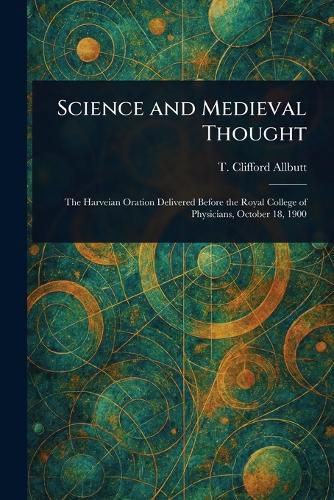Readings Newsletter
Become a Readings Member to make your shopping experience even easier.
Sign in or sign up for free!
You’re not far away from qualifying for FREE standard shipping within Australia
You’ve qualified for FREE standard shipping within Australia
The cart is loading…






This title is printed to order. This book may have been self-published. If so, we cannot guarantee the quality of the content. In the main most books will have gone through the editing process however some may not. We therefore suggest that you be aware of this before ordering this book. If in doubt check either the author or publisher’s details as we are unable to accept any returns unless they are faulty. Please contact us if you have any questions.
Explore the fascinating intersection of science and philosophy in "Science and Medieval Thought," a meticulously prepared republication of Sir Thomas Clifford Allbutt's Harveian Oration delivered in 1900. This historical text delves into the landscape of medieval science, medicine, and philosophy, offering insights into the prevailing intellectual currents of the era.
Allbutt's oration, presented before the Royal College of Physicians, provides a window into the history of science and medieval thought. Readers interested in the history of Europe during the Medieval period will find rich detail in the author's exploration of the philosophical underpinnings of scientific inquiry. Uncover the historical context that shaped our understanding of the world in this timeless examination of philosophy and science during the Middle Ages. A valuable resource for anyone studying the history of science or the development of medieval thought.
This work has been selected by scholars as being culturally important, and is part of the knowledge base of civilization as we know it.
This work is in the public domain in the United States of America, and possibly other nations. Within the United States, you may freely copy and distribute this work, as no entity (individual or corporate) has a copyright on the body of the work.
Scholars believe, and we concur, that this work is important enough to be preserved, reproduced, and made generally available to the public. We appreciate your support of the preservation process, and thank you for being an important part of keeping this knowledge alive and relevant.
$9.00 standard shipping within Australia
FREE standard shipping within Australia for orders over $100.00
Express & International shipping calculated at checkout
This title is printed to order. This book may have been self-published. If so, we cannot guarantee the quality of the content. In the main most books will have gone through the editing process however some may not. We therefore suggest that you be aware of this before ordering this book. If in doubt check either the author or publisher’s details as we are unable to accept any returns unless they are faulty. Please contact us if you have any questions.
Explore the fascinating intersection of science and philosophy in "Science and Medieval Thought," a meticulously prepared republication of Sir Thomas Clifford Allbutt's Harveian Oration delivered in 1900. This historical text delves into the landscape of medieval science, medicine, and philosophy, offering insights into the prevailing intellectual currents of the era.
Allbutt's oration, presented before the Royal College of Physicians, provides a window into the history of science and medieval thought. Readers interested in the history of Europe during the Medieval period will find rich detail in the author's exploration of the philosophical underpinnings of scientific inquiry. Uncover the historical context that shaped our understanding of the world in this timeless examination of philosophy and science during the Middle Ages. A valuable resource for anyone studying the history of science or the development of medieval thought.
This work has been selected by scholars as being culturally important, and is part of the knowledge base of civilization as we know it.
This work is in the public domain in the United States of America, and possibly other nations. Within the United States, you may freely copy and distribute this work, as no entity (individual or corporate) has a copyright on the body of the work.
Scholars believe, and we concur, that this work is important enough to be preserved, reproduced, and made generally available to the public. We appreciate your support of the preservation process, and thank you for being an important part of keeping this knowledge alive and relevant.